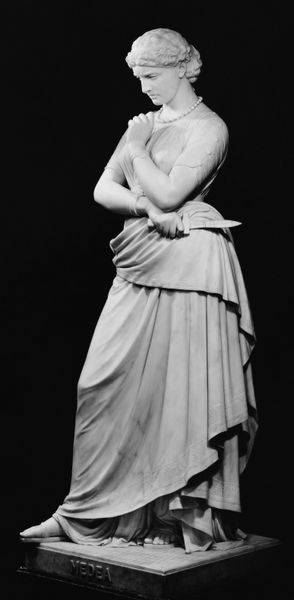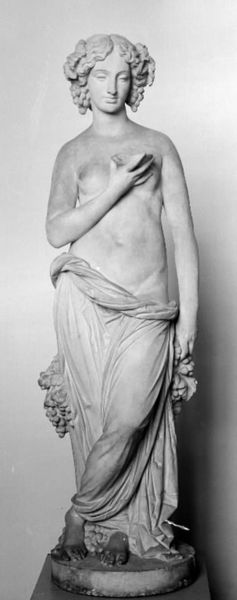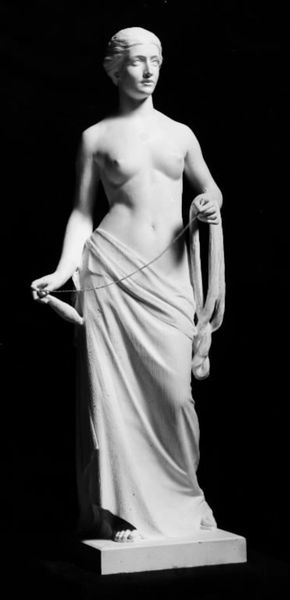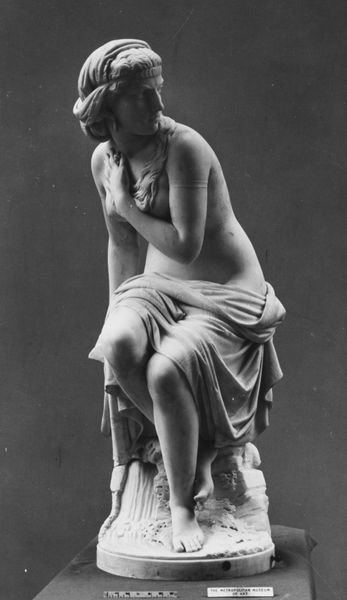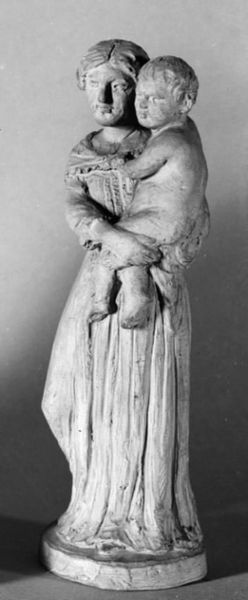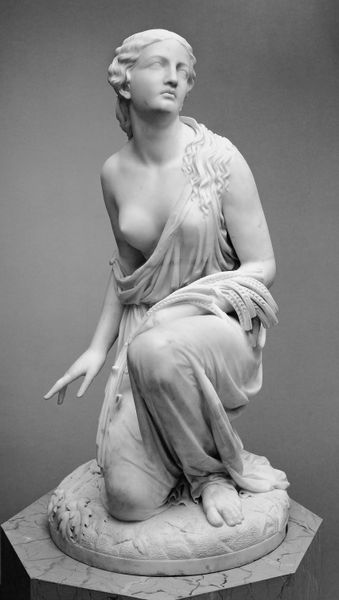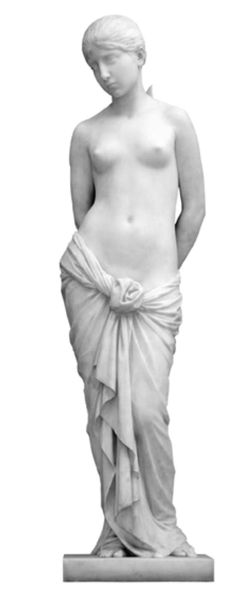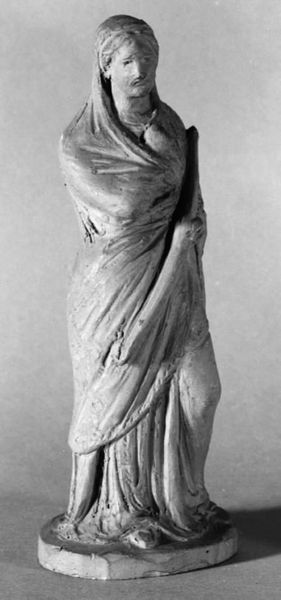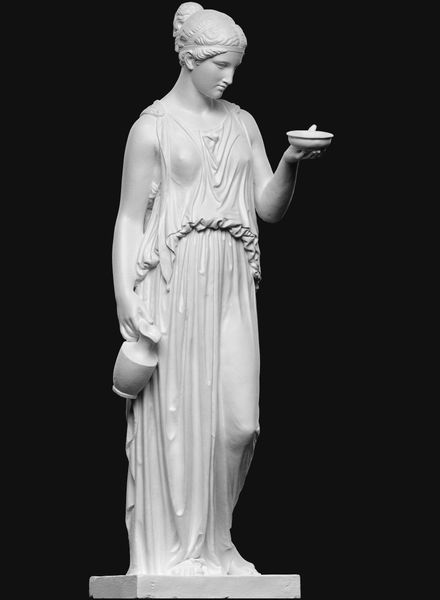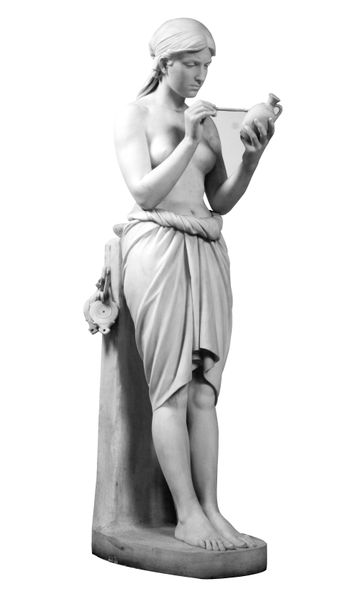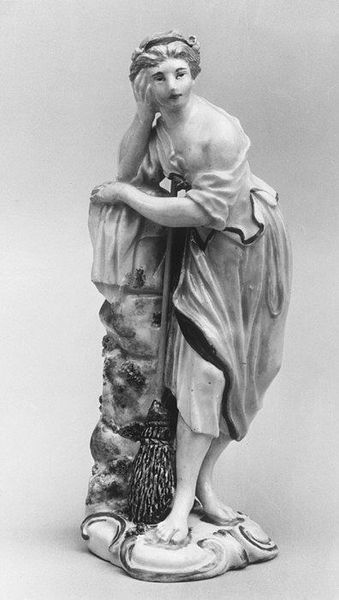
Dimensions: 174 cm (height) (Netto), 505 kg (weight) (None)
Curator: Here we have August Saabye's marble sculpture, "Lady Macbeth Walking in Her Sleep," created in 1891. Editor: The first thing that strikes me is the contrast between the smoothness of the marble and the tortured subject matter. It's as if the weight of her guilt is fighting against the elegance of the form. Curator: Absolutely. Saabye captures Lady Macbeth in a moment of profound psychological distress. Her pose, with her eyes closed and head tilted back, speaks to a detachment from reality. It is all that romantic tension, wouldn't you agree? Editor: Definitely. It also places the piece in conversation with late 19th-century debates around hysteria and the portrayal of women’s psychological experiences. The sleepwalking could symbolize her inability to escape the consequences of her actions, almost as if her subconscious is betraying her. How does the artist's romantic perspective play into this? Curator: Well, it certainly heightens the emotional intensity. Romanticism was, after all, about exploring the darker aspects of the human condition. Saabye is less interested in historical accuracy and more in conveying the character's internal turmoil. Think of her as a sort of conduit, not merely a royal. Editor: Her clasped hands are a focal point. Are they conveying anxiety? The folds of her gown, while seemingly simple, contribute to the sculpture's dynamic sense. They look to me almost like rivers of unspoken regret. Curator: The hands certainly reveal something profound. To me they’re conveying a kind of desperate vulnerability, or perhaps even a kind of reaching for a catharsis she cannot find. Do you feel the texture adds to it? Editor: In many ways, the piece reminds us that trauma often resides beneath a polished surface. Even figures of power are not immune to the corrosive effects of guilt and mental anguish. What this sculpture offers is a visual study into the performance of class versus private torment. Curator: I couldn't agree more! It's a powerful statement about the duality of appearance and inner experience, a theme that continues to resonate today. Editor: Exactly, a study of psychological fragmentation and feminine guilt. Thank you!
Comments
No comments
Be the first to comment and join the conversation on the ultimate creative platform.
